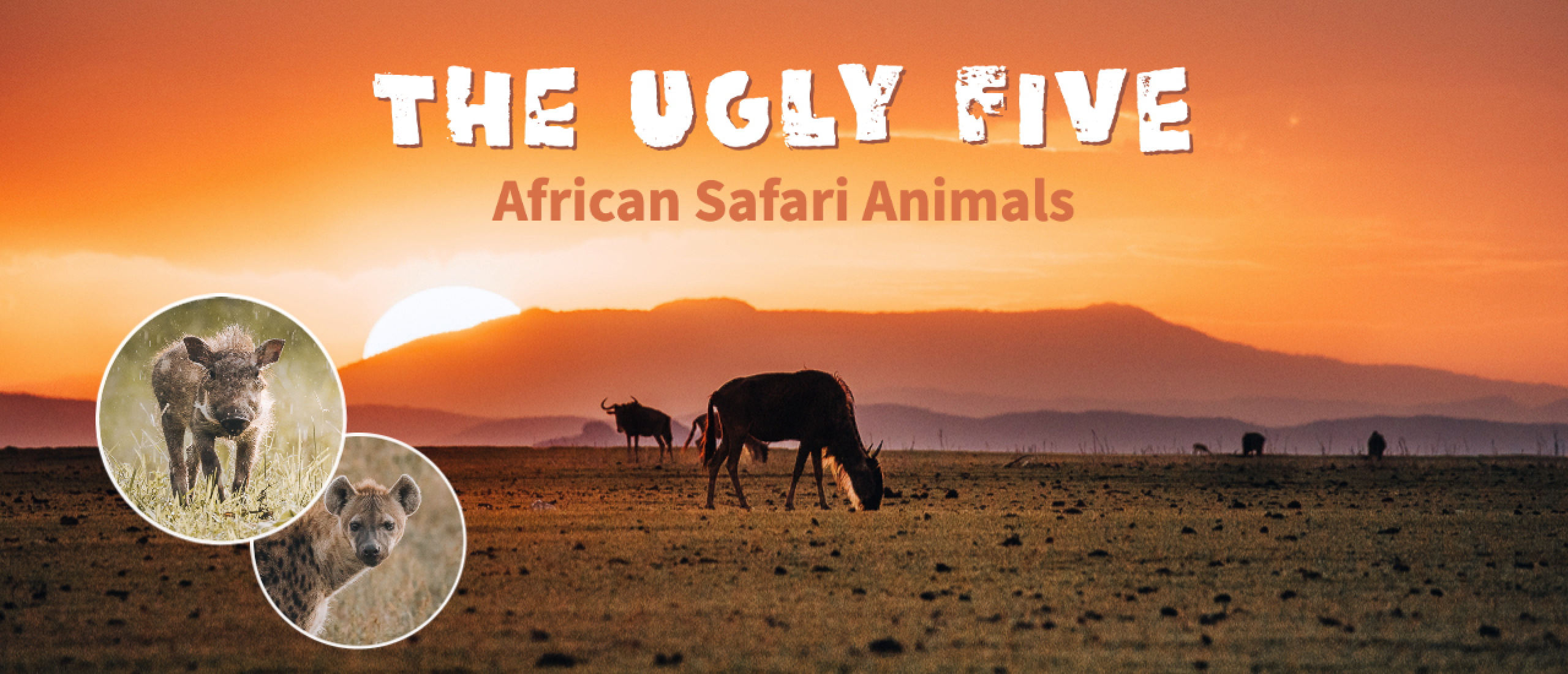
The Ugly Five Animals of Africa: Ugly Safari Animals
The Ugly Five is a term coined by African safari guides and tour operators to describe a group of safari animals in Africa that are often overlooked and not considered to be extremely attractive but are still fascinating and worthy of conservation. These ugly five animals of Africa include the warthog, the spotted hyena, the marabou stork, the lapped-faced vulture, and the wildebeest. So, apart from the Big Five and the Little Five, there's also an Ugly Five. And did you know there's a Shy Five as well?
Since beauty is subjective, it's important to appreciate the diversity and uniqueness of all animal species, regardless of their appearance. What some may consider unattractive, others may find fascinating or endearing. Each animal has evolved distinct features and adaptations that enable it to survive in its specific habitat.
Why are they called The Ugly Five Safari Animals?
We already know that the term Ugly Five is not a scientific classification, so why are they called The Ugly 5? All of these animals have ungainly looks and a somewhat awkward appearance. The name "Ugly Five" was most likely contrived by the safari industry to create a commercialized and attention-grabbing concept that contrasts with the more commonly known Big Five, which are known for their iconic status and charismatic appeal.
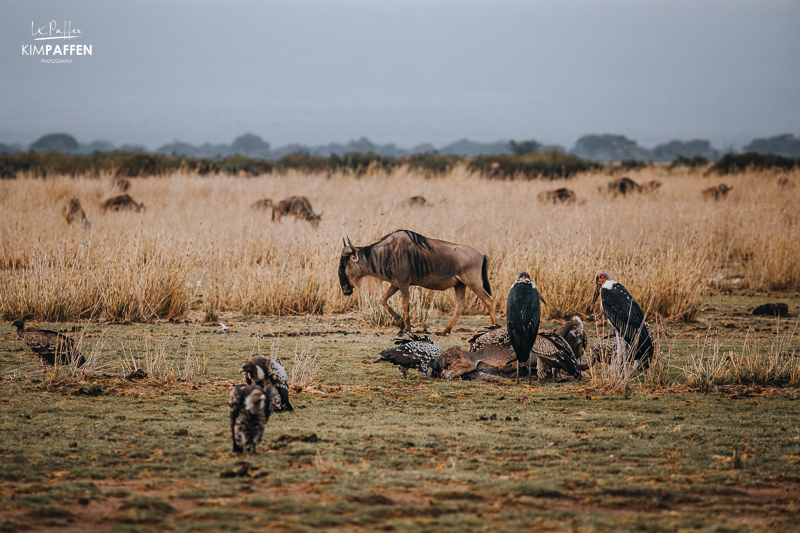
The intention behind using the term Ugly Five is to draw attention to lesser-known or less glamorous African animals, highlighting their unique characteristics and promoting a broader appreciation for Africa's diverse wildlife. Did you know there's also an animal group called the Little Five and the Shy Five?
Get ready to meet the five ugliest animals in Africa! They may not be conventionally beautiful, but they sure have their own charm. Let's dive in and discover these extraordinary creatures, including images that I captured myself while on Safari in Africa:
The Ugly Warthog
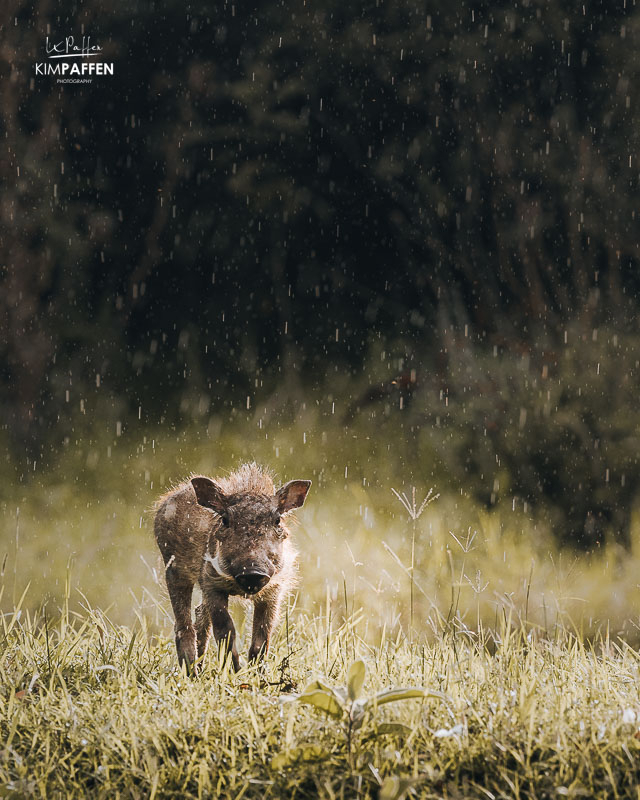
Warthogs are wild pigs known for their distinctive tusks, wart-like facial features, and mane of bristly hair, which gives them a somewhat rough and rugged appearance. Despite their tough exterior, warthogs are actually quite gentle and sociable animals. They are native to Africa and can be found in a variety of habitats, including savannas, woodlands, and grasslands. Warthogs are omnivorous, and their diet consists of a variety of plants and small animals.
Personally, I love to watch warthogs, especially the babies, and when they run with their tails up! I don't think they are ugly but they are also not the prettiest animals of the African bush. What are your thoughts on the fact that the warthog is listed as one of the 'Ugly Five' animals of Africa?
The Ugly Spotted Hyena
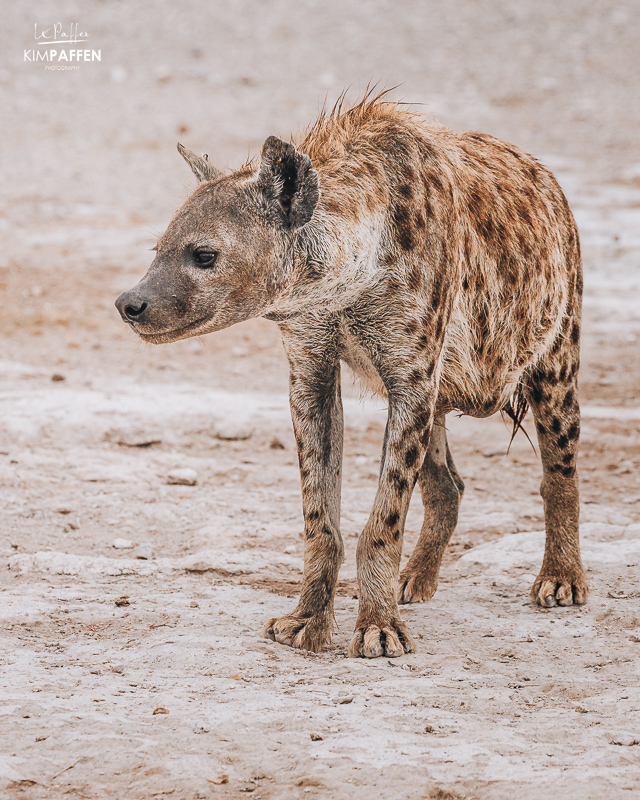
The Spotted Hyena is another animal that is often considered to be "ugly." Hyenas have a sloping back and a disproportionally large head. They have a reputation for being scavengers and are often depicted as sneaky and dishonest. This is also how they appear in The Lion King and one of the reasons why they are disliked. However, hyenas are actually intelligent and social animals that play important roles in their ecosystems. There are four species of hyena, all of which are native to Africa and parts of Asia. Hyenas are carnivorous mammals and play a crucial role in controlling the populations of other animals. The Hyena species that is considered a member of the Ugly Five safari animals is the Spotted Hyena.
The Ugly Marabou Stork
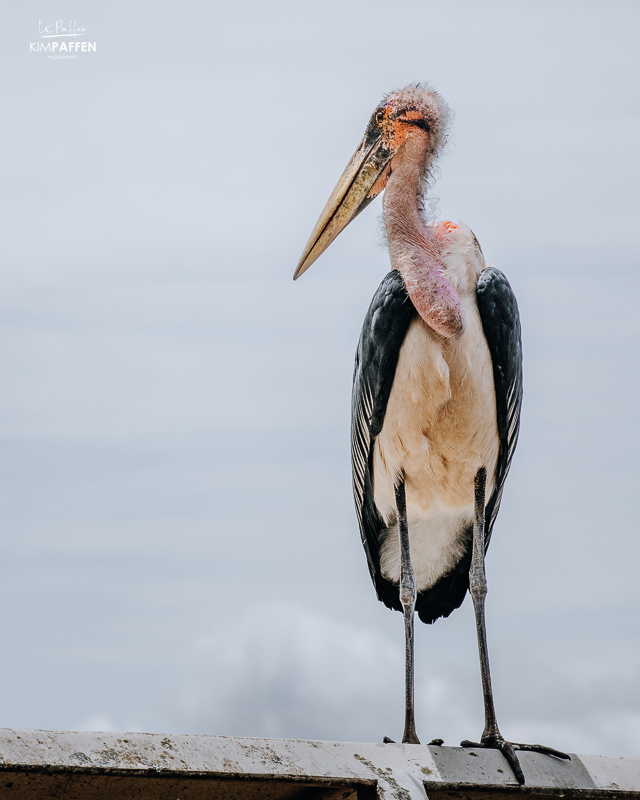
Marabou storks are large, wading birds with long, gangly legs and bald, fleshy heads. They have a wingspan of up to 3 meters. The Marabou Stork is often considered to be ugly due to its ungainly scraggly appearance, but they are actually important members of their ecosystems. Marabou storks are found in Africa and parts of Asia, and they feed on a variety of small animals and carrion. If you have to choose an Ugly 5, I understand why the Marabou Stork is part of this ugly African animal group.
The Ugly Lappet-faced Vulture
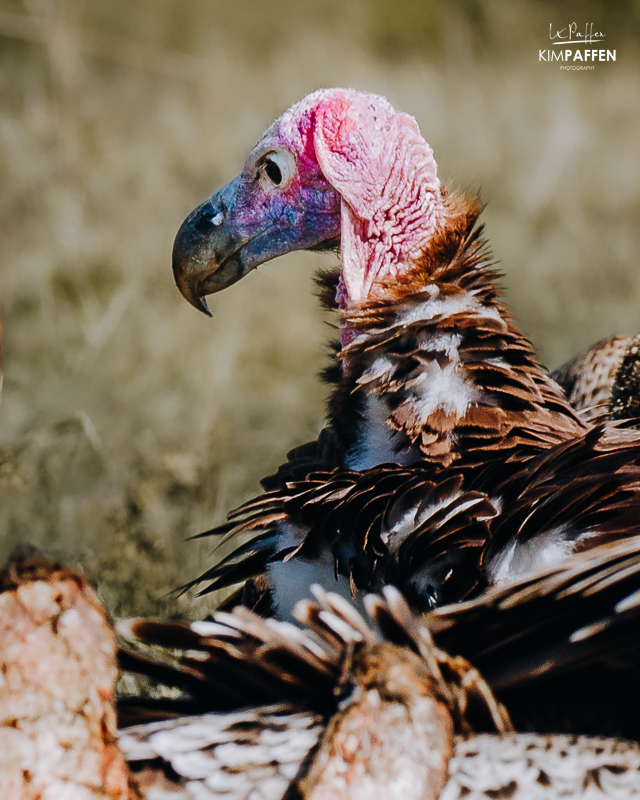
The Lappet-faced Vulture is another animal that is often considered to be ugly due to its scavenging habits and bald head, covered in wrinkled, pinkish skin. The lack of feathers and the wrinkled appearance can give it an unusual and less conventionally attractive appearance compared to other bird species. The Lappet-faced vultures are among the largest vulture species, with a wingspan of up to 3 meters. Their large size, combined with their other distinctive features, can make them appear intimidating or less attractive. However, vultures play an important role in their ecosystems by cleaning up the remains of dead animals.
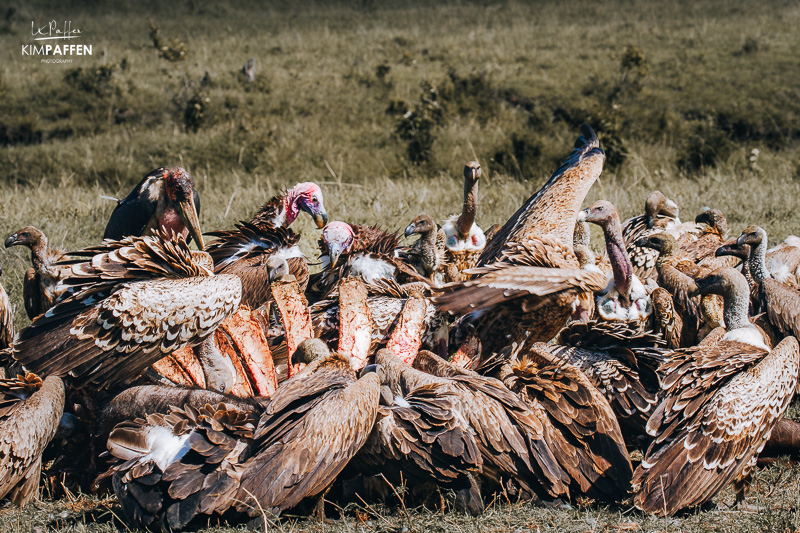
Seeing these vultures feed on dead animals, including the Big Five (elephant, rhino, buffalo, lion, and leopard), is also a reason why they can be less favored by people. With their bloody heads, they look even more ugly. The times I've encountered the Lappet-faced Vulture on safari, I saw them feeding on various buffalo carcasses; always in the Maasai Mara and always together with other species of vultures, including the White-backed Vulture and the Ruppell's Vulture. The Marabou Stork, the other member of the Ugly Five, is usually present around the carcass as well. Can you spot the Lappet-faced Vulture and the Marabou Stork in the image above?
The Ugly Wildebeest
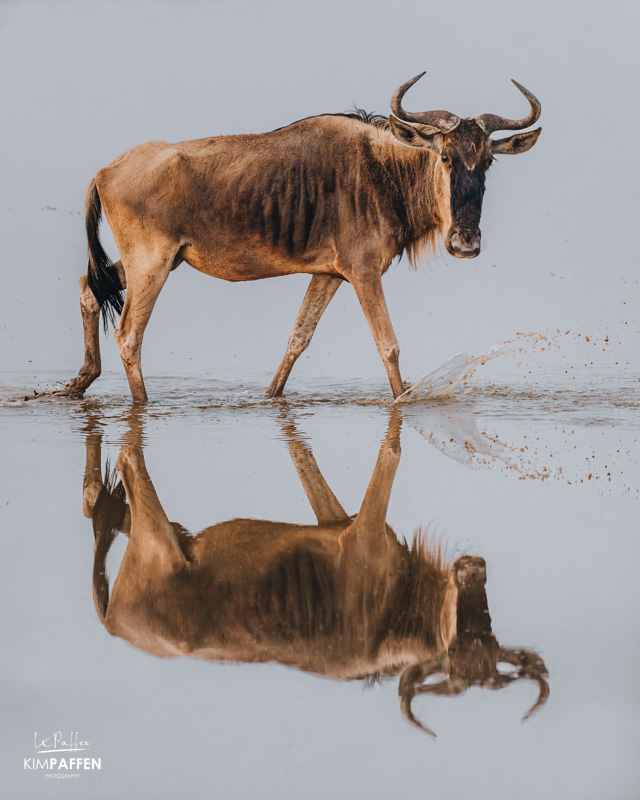
The Wildebeest, also known as Gnu, is a large, hoofed mammal native to Africa. They are often referred to as the "ugly five" animals of Africa due to their awkward appearance, characterized by their long goofy faces and bulging eyes with shaggy manes and curved horns. Despite their somewhat unusual appearance due to their boxy head and goofy facial expression, wildebeest are important members of their ecosystems and play a crucial role in maintaining grasslands. There are two species of wildebeest, the Blue wildebeest, and the Black wildebeest. Wildebeests are probably the most famous because of the annual Great Migration that takes part in Kenya and Tanzania.
The Ugly Five Safari Animals of Africa
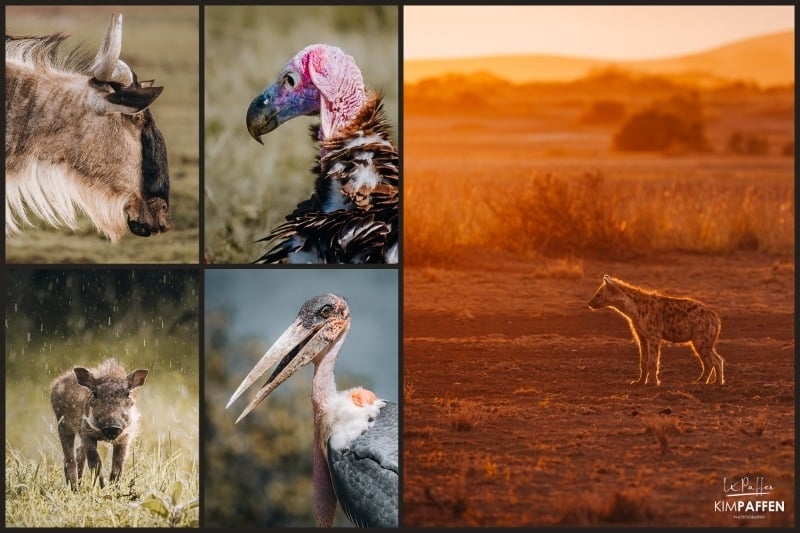
Despite their reputation for being labeled as 'ugly', the ugly five safari animals of Africa are actually fascinating animals that deserve our respect and conservation. They play vital roles in their ecosystems in the African wilderness and contribute to the balance of life on Earth with functions like scavenging, seed dispersal, and controlling populations of other animals.
By learning more about these ugly African animals and supporting conservation efforts, we can help to protect and preserve these species for future generations. There are even children's books called The Ugly Five written by Julia Donaldson, but are they really the ugliest animals in the bush? To me, these five African safari animals are perfectly imperfect and I'm always happy to see them on safari in Africa!
How do you feel about the Ugly Five animals of Africa? Share your thoughts in the comments.

